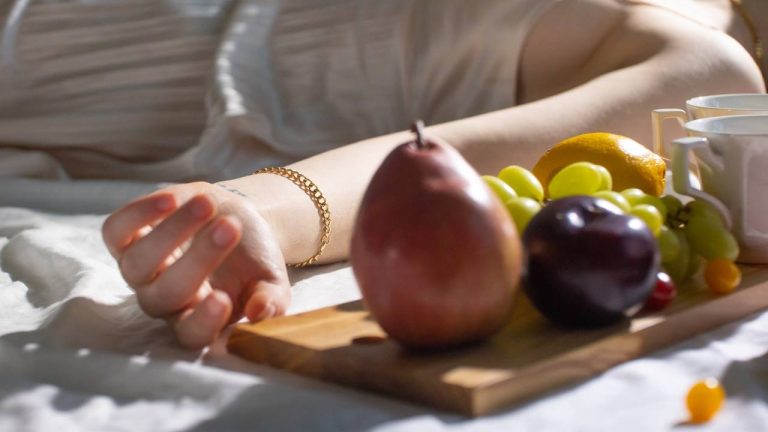
The appearance of the skin says a lot about how we eat: food deficits and excesses are reflected in different skin problems or in healthy and radiant skin.
The skin is the largest and largest organ of the whole body: it occupies between 1.2 and 2 square meters. It is also the one that weighs the most: between 5 and 7% of total body weight.

It is much more than an envelope and its functions are multiple and vital, since it acts as an immune barrier, isolates us, warns us, helps regulate body temperature, synthesizes vitamin D, eliminates toxic substances and constitutes, at the same time, the place of exchanges par excellence with the outside world.
If we add to all this that the skin and the nervous system have the same embryonic origin, it is not strange that it has come to be called the “extended brain”. In fact, many emotional conflicts emerge through the skin. Eczema, allergies, psoriasis or acne can have a psychosomatic component.
But the condition of the skin is also a good indicator of nutritional balance because its “complaints” as a result of a poorly planned diet are very visible,
For healthy skin, it is necessary to avoid excess fats in the diet but, at the same time, ensure a sufficient intake of the two essential fatty acids, linoleic and alpha-linolenic, that is, avoid foods with hidden fats and give priority to fats of vegetable origin.
It is also advisable to moderate the consumption of meat and its derived products, since they often take more than twice as much protein as is really needed, which affects the liver and kidney and, consequently, the skin.
1. SKIN-TAKING VITAMINS
Most vitamins have a decisive role for the good condition of the skin, especially vitamin C, due to its participation in the synthesis of collagen and its antioxidant action.
Among the long list of beneficial minerals for the skin are zinc, iron and copper.
The best general advice to obtain the necessary micronutrients is to follow a sufficient and varied diet, with fresh, seasonal foods.
2. FOODS THAT FAVOR THE SKIN
Those that provide complex carbohydrates (starch), unsaturated fats, vitamins and minerals in abundance and fiber.
From this nutritional perspective, the generous presence of fruits and vegetables is always welcome, and also the regular consumption of olive oil.
Proper hydration is also a basic requirement. As a general rule, it is advisable to drink 2 to 3 liters of water daily, adding that which brings many foods to the one that is drunk.
3. FOODS THAT HARM THE SKIN
More than foods in particular, what harms the skin is an unbalanced diet.
But it is true that the habitual presence of some contributes to this imbalance: foods very rich in sugars, with high amounts of saturated fats and highly processed, such as bakery products, sugar sausages, soft drinks and alcoholic beverages.
4. FOODS THAT CAUSE HIVES OR ECZEMA
The foods that trigger hives most often are; milk, eggs, fish, strawberries, chocolate, sausages, preserves and cheese.
And those that usually cause eczema: milk and derivatives, egg, wheat, rye, bakery products, fish and nuts.
But any food can trigger these reactions.
5. NUTRIENTS THAT ARE ABSORBED THROUGH THE SKIN
The skin is receptive to many substances. In general, external applications of nutrients pursue a local effect, that is, on the skin itself, and not for the whole organism.
For example, evening primrose oil, rich in essential fatty acids, is applied in cases of atopic eczema, and vitamin D in case of psoriasis.
Benefits can be obtained from food topically. Avocado, cucumber, tomato and olive oil are common products in the field of natural aesthetics.
As a concrete example, some professionals use lemon and cucumber juices to treat oily skin related to acne processes.
6. 0% FAT FOODS: DO THEY HELP THE SKIN?
Looking for products with 0% fat in the diet can become harmful to the skin, because it leads to deficiency of essential fatty acids, which manifests itself with skin dehydration, increased risk of skin infections, decreased healing capacity, itching and peeling.
7. CHOCOLATE AND ACNE: IS THERE A RELATIONSHIP?
From the nutritional point of view, chocolate or sausages are dispensable foods. But only some sensitive or predisposed skin reacts with pimples when consumed.
8. FOODS THAT FAVOR BROWN
This is a controversial issue, although there are experts who point out that food’s rich in carotenes, such as carrots, tomatoes, melons, oranges and spinach, exert this effect. Another thing is the yellowish pigmentation of the skin when oranges or carrots are abused.
9. HOW OBESITY AFFECTS THE SKIN
Usually the consequences are excessive perspiration, rashes and infections between surfaces that rub (intertrigo) and circulatory disturbances.
Also, excessive dilation can lead to stretch marks. On the other hand, you have to pay attention to rapid thinning, which can cause wrinkles and stretch marks.
10. SUPPLEMENTS GO WELL FOR THE SKIN
Evening primrose and borage oils are prescribed for atopic eczema, EPA (a polyunsaturated fatty acid of the omega-3 family present in oily fish) in psoriasis, and provitamins if deficiencies are suspected.